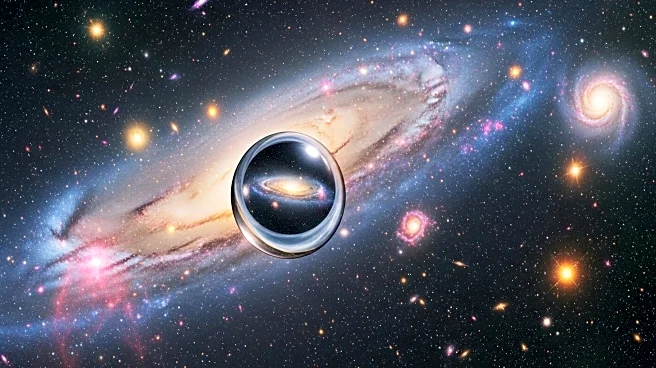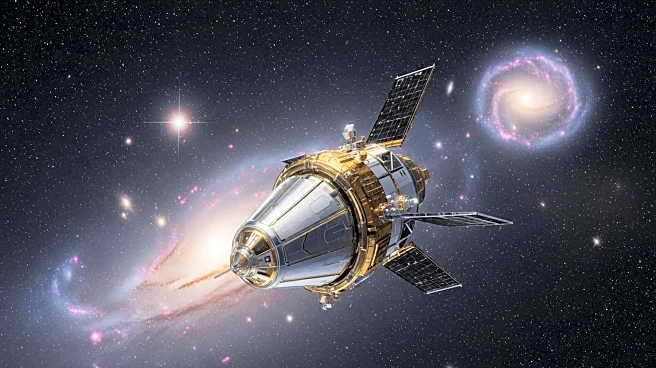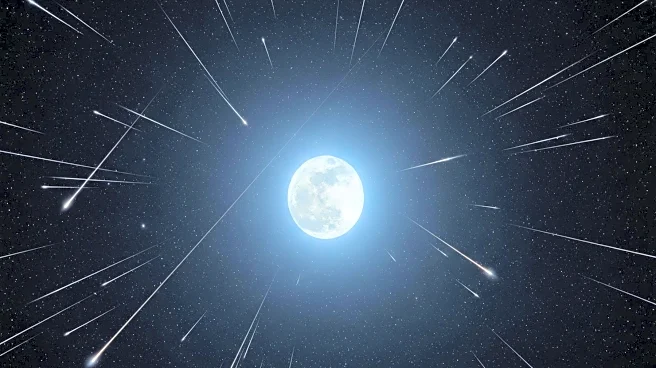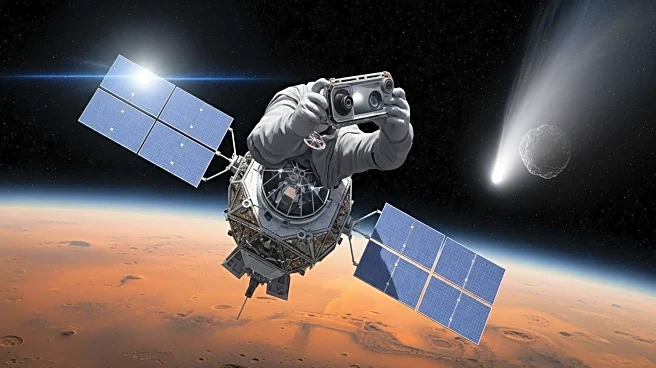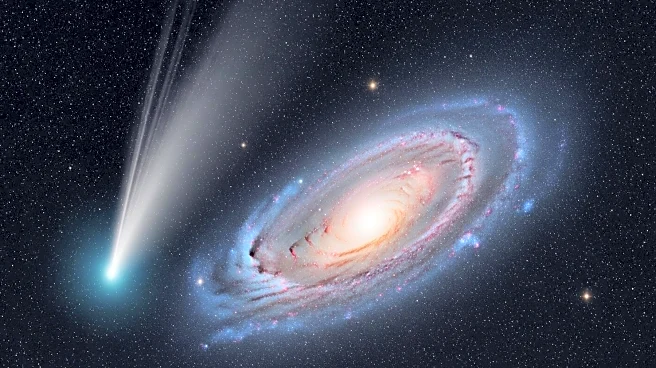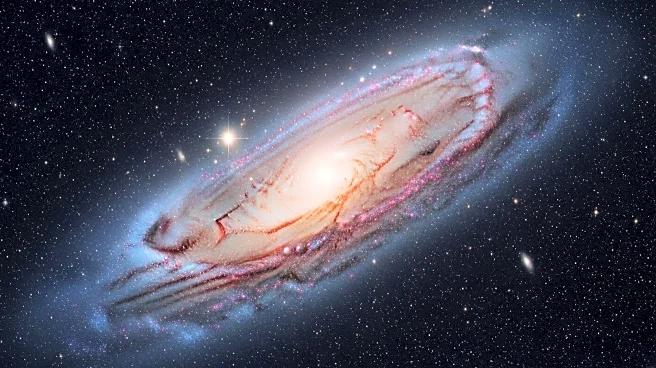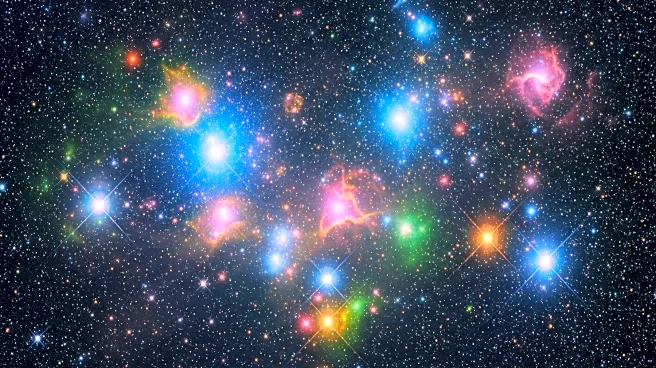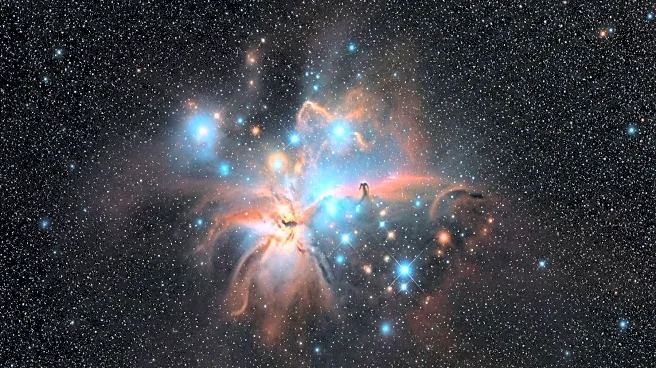What is the story about?
What's Happening?
NASA has confirmed the discovery of a mysterious sphere, named CWISE J1249, traveling at 1 million miles per hour and escaping the Milky Way. This discovery was made possible through the efforts of citizen scientists participating in NASA's Backyard Worlds: Planet 9 project. The sphere's high velocity and unusual characteristics challenge existing astronomical classifications, as it is too large to be a planet and too small to be a star. Theories suggest its speed could be due to a supernova kick or a black hole slingshot, raising intriguing questions about its origin and nature.
Why It's Important?
The discovery of CWISE J1249 highlights the potential for citizen scientists to contribute to significant astronomical findings. It challenges existing classification systems and provides insights into the diversity of objects in the universe. Understanding such high-velocity objects can enhance our knowledge of cosmic phenomena and the mechanisms driving them. The research underscores the importance of public engagement in scientific exploration, fostering collaboration between amateur astronomers and professional researchers.
What's Next?
Researchers will continue to study CWISE J1249 to understand its unique properties and origin. This ongoing research may lead to a deeper understanding of stellar evolution and the dynamics of high-velocity celestial objects. The involvement of citizen scientists in this discovery suggests that similar projects could accelerate the identification of new cosmic phenomena, expanding the reach of astronomical exploration.
Beyond the Headlines
The discovery of CWISE J1249 challenges existing theories about cosmic objects and their classifications. It emphasizes the complexity of the universe and the need for innovative approaches to study celestial phenomena. The research also highlights the collaborative efforts of scientists and citizen scientists, showcasing the potential for public engagement in advancing scientific knowledge.
AI Generated Content
Do you find this article useful?
